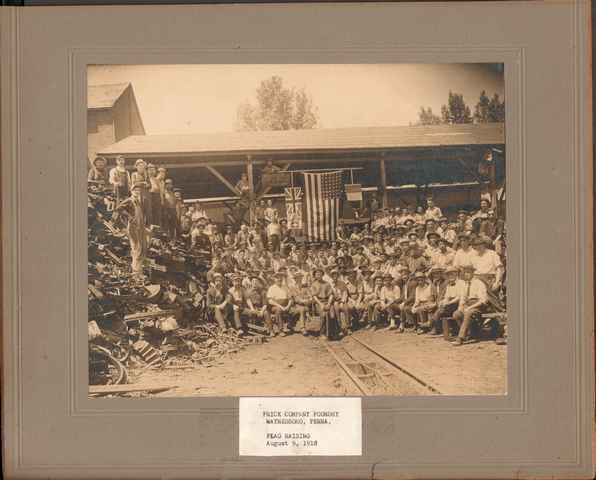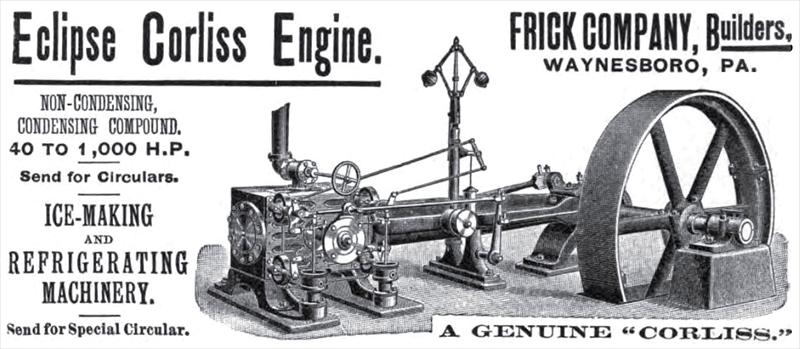George Frick and His Steam Empire

Booming business
In the country at that time were thousands of flour, grist, saw, paper and woolen mills, as well as forges, iron furnaces and tanneries, all of which required some sort of power source. Most had gotten by with water power, which was inefficient and unreliable, or horse power, which was expensive. Frick’s expertise as a millwright, and his ability to furnish small steam engines, made him the man of the hour and quickly boosted his business.
Frick began building sawmills and threshing machines, along with horse powers and portable steam engines to run them. Business grew; in 1861, he built a larger building in Waynesboro, Pa., and moved his plant there.
When Gen. Lee’s Army of Northern Virginia invaded Pennsylvania in the summer of 1863, the Confederates desperately needed shoes and harness. The story goes that they raided the Frick factory and liberated all the leather that was intended to make belting for threshing machines. After the war, the southern states were just as desperate for sawmills and threshers and managed to scrounge enough leather to replace that which had been taken from George Frick. In return, the Frick firm furnished the much-needed machinery to the South, often being paid in lumber and other products in lieu of cash.
Tragedy struck the Frick family on Oct. 18, 1867, when George’s 8-year-old daughter was caught in an open revolving shaft outside the factory. According to a newspaper account of the incident, “The girl was playing with other children when her clothing was caught by the shaft. Before she could be rescued, her body was so badly mangled as to cause almost instant death. A guard rail was built around the deadly shaft at once.”
Building for the future: the Frick Co.
In the late 1860s, Frick built a larger brick factory across the street, and Geiser Mfg. Co., which also built threshing machines, took over the old Frick works. Frick sold his thresher business to Geiser and concentrated on boilers and steam engines.
Frick’s business continued to expand and George needed capital. He formed a partnership with a cousin named Bowman in 1870, but Bowman, as well as Frick’s oldest son, Frank, died of typhoid in 1872. Still in need of capital, and handicapped by the absence of rail service to Waynesboro, Frick considered offers to move his plant to another town with a rail line. Finally, 13 Waynesboro businessmen raised enough money to rescue Frick, who gave up his financial interest in the company to the new partnership, but remained as general superintendent, manager and treasurer.
At Philadelphia’s Centennial Exposition in 1876, a Frick Eclipse farm traction engine won the gold medal for the best in its class. Four years later, an Eclipse engine won out over 25 other engines at an exposition in Melbourne, Australia. Business was booming and a new factory was built in 1881. In 1885, the Frick Daniel Boone traction engine was shown at fairs and won 39 first premiums. That year, the firm was incorporated and, in 1888, George Frick retired.
More next time about the subsequent activities of the Frick company and its present day descendant, Frick York Refrigeration.
Sam Moore grew up on a farm in western Pennsylvania. He now lives in Salem, Ohio, and collects antique tractors, implements and related items. Contact Sam by email at letstalkrustyiron@att.net.
 Engineer’s Genius Launched Diverse Frick Line
Engineer’s Genius Launched Diverse Frick Line


 Engineer’s Genius Launched Diverse Frick Line
Engineer’s Genius Launched Diverse Frick Line